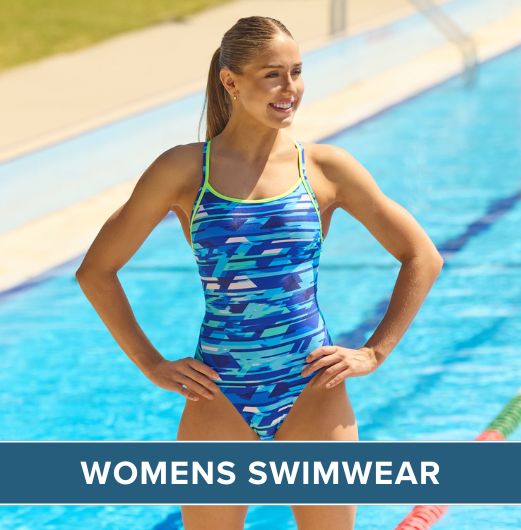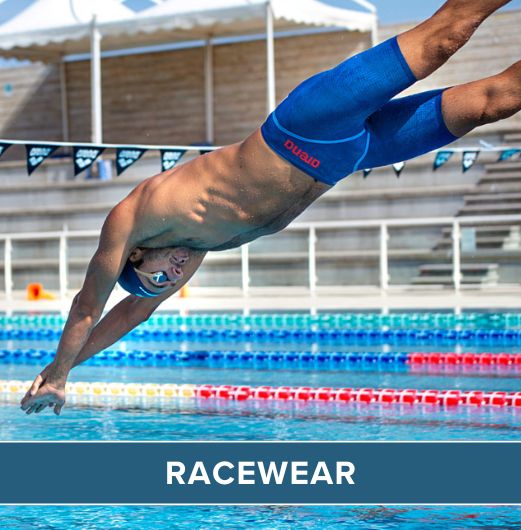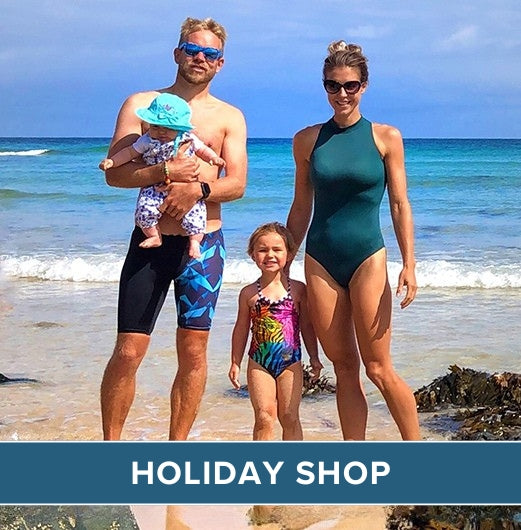Swimming is a sport that integrates strength, endurance, technique, and mental focus. By understanding and applying scientific principles, swimmers can significantly enhance their performance. This blog explores the science behind effective swim training, covering physiology, biomechanics, and psychology, and suggests equipment to support these areas.
1. Physiology: Building Strength and Endurance
Aerobic and Anaerobic Conditioning:
Swimming requires a balance of aerobic and anaerobic conditioning. Aerobic conditioning involves moderate-intensity, long-duration exercises that improve cardiovascular endurance and the body’s efficiency in using oxygen. Examples include continuous lap swimming and long-distance swims. These exercises help swimmers sustain efforts over long periods without fatigue.
Anaerobic conditioning focuses on short bursts of high-intensity effort, relying on energy stored in the muscles. Activities like sprinting and high-intensity interval training (HIIT) are common anaerobic exercises. They enhance a swimmer's ability to perform at high speeds and recover quickly.
Recommended Equipment:
- Swim Paddles: Help build upper body strength and improve stroke technique.
- Fins: Enhance leg strength and improve kick efficiency.
- Pull Buoy: Isolates the upper body to focus on arm strength and technique.
https://www.simplyswim.com/collections/swimming-equipment
Strength Training:
Strength training is essential for developing the power needed for effective swimming. Exercises targeting the core, shoulders, and legs enhance stroke force and efficiency. Core exercises like planks improve stability, shoulder exercises like pull-ups increase stroke power, and leg exercises like squats enhance kicking strength.
Recommended Equipment:
- Resistance Bands: Useful for dryland exercises that target swim-specific muscles.
- Medicine Ball: Helps build core strength through various exercises.
https://www.simplyswim.com/collections/resistance
2. Biomechanics: Perfecting Technique
Streamlining:
Streamlining reduces drag, allowing for faster movement through the water. This involves maintaining a horizontal body position, keeping the head aligned with the spine, and pointing the toes. Effective streamlining is crucial during starts, turns, and underwater phases.
Recommended Equipment:
- Swim Snorkel: Allows swimmers to focus on body position and streamline without needing to turn their heads to breathe.
https://www.simplyswim.com/collections/snorkels
Stroke Mechanics:
Each swimming stroke—freestyle, backstroke, breaststroke, and butterfly—has specific mechanics that need to be mastered. Key aspects include the entry and exit of hands in the water, breathing timing, body rotation, and kick coordination. Video analysis is often used to refine these techniques, providing visual feedback on areas for improvement.
Propulsion:
Efficient propulsion combines arm strokes and leg kicks. For example, in freestyle, a high elbow catch and a flutter kick are essential for maintaining speed and balance.
Recommended Equipment:
- Kickboard: Isolates the legs to focus on kick strength and technique.
- Tempo Trainer: Helps swimmers maintain a consistent stroke rate and rhythm.
https://www.simplyswim.com/collections/kick-boards
3. Psychology: Mental Preparation and Focus
Goal Setting:
Setting clear, achievable goals is a fundamental part of effective swim training. Goals provide motivation and direction, helping swimmers focus their efforts. Short-term goals might include improving specific techniques or achieving a certain time in practice, while long-term goals could involve reaching a personal best in competition.
Visualisation:
Visualisation techniques involve mentally rehearsing the perfect swim. This practice builds confidence and enhances focus, reducing anxiety and improving race-day execution.
Mindfulness and Relaxation:
Managing stress and maintaining composure are critical for peak performance. Techniques such as deep breathing, meditation, and progressive muscle relaxation help swimmers stay calm and focused.
Recommended Equipment:
- Yoga Mat: Useful for mindfulness exercises and relaxation techniques.
- Foam Roller: Aids in muscle relaxation and recovery.
https://www.simplyswim.com/collections/keep-fit
4. Recovery and Nutrition: Supporting Performance
Recovery:
Effective recovery strategies prevent injuries and reduce fatigue. This includes rest days, active recovery sessions, and techniques like ice baths or massages. Adequate sleep is also crucial for the body to repair and rejuvenate.
Recommended Equipment:
- Compression Garments: Enhance recovery by improving blood flow.
- Massage Stick: Helps relieve muscle tension and improve flexibility.
Nutrition:
Proper nutrition fuels training and aids recovery. A balanced diet rich in carbohydrates, proteins, and fats provides necessary energy and nutrients. Hydration is equally important, as dehydration can impair performance and recovery. Swimmers should eat nutrient-dense foods and stay well-hydrated before, during, and after training sessions.
Recommended Equipment:
- Water Bottle: Ensures consistent hydration.
- Protein Shaker: Convenient for post-workout nutrition.
https://www.simplyswim.com/collections/water-bottles
The science behind effective swim training involves a blend of physiology, biomechanics, psychology, and proper recovery and nutrition. By understanding and applying these principles and utilising the right equipment, swimmers can optimise their training, improve performance, and achieve their goals. Whether you are a recreational swimmer or an elite athlete, embracing these scientific insights can help you swim faster, longer, and more efficiently.
 Free Tracked UK Delivery
Free Tracked UK Delivery Hassle Free Returns
Hassle Free Returns Next Working Day OPTION
Next Working Day OPTION Found It Cheaper?
Found It Cheaper?




















